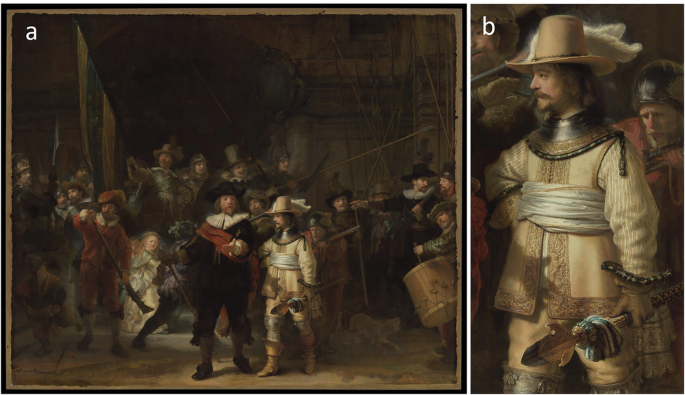| This study examines Rembrandt’s use of chiaroscuro to depict the costume of Lieutenant Willem Van Ruytenburch, a prominently lit figure in The Night Watch (1642). As part of Operation Night Watch, the painting was analyzed using noninvasive imaging techniques, including reflectance imaging spectroscopy (RIS), macroscopic X-ray powder diffraction (MA-XRPD), and macroscopic X-ray fluorescence (MA-XRF). These methods enabled the mapping of the artist’s pigment palette, which includes lead white, lead-tin yellow, ochres, vermilion, arsenic sulfide pigments, red lakes, smalt, and azurite. Rembrandt applied these pigments in a consistent, systematic way, combining them in groups to achieve pictorial unity. Notably, arsenic-based pigments were used to capture the warm reflections of gold threads, unique to Van Ruytenburch’s costume. MA-XRPD also identified degradation products—mimetite, weddellite, and palmierite—associated with the original pigments. These results provide new insights into Rembrandt’s modus operandi and inform understanding of the current condition and implications for its conservation. npj Herit. Sci. Nouchka De Keyser et al. |  |